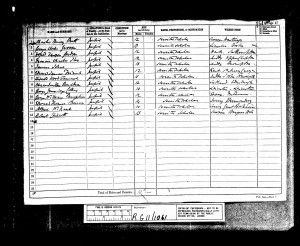After seven years at boarding school in Ardingly, George Jennings Collis is back in Leicester. It’s Thursday morning, 25th July 1889 and he approaches the stage at Wyggeston Boys’ School. It’s school prize day and he – along with Atkins [the son of the science master], Berridge and Forth – is being cheered by his fellow Wyggeston pupils for being one of “four of our number going to the Universities this year”. In October, he’ll be going up to Clare College, Cambridge.
As headmaster the Rev James Went points out, “Though Collis has not been here a long time, he has done excellent service, more especially in connection with the cricket team, and has been an efficient captain during the year. We shall be sorry to lose his services in the cricket field, but the University of Cambridge shall have the benefit of them, and we shall all feel that Collis has too much sense to go to Cambridge and devote all his time to cricket.”


